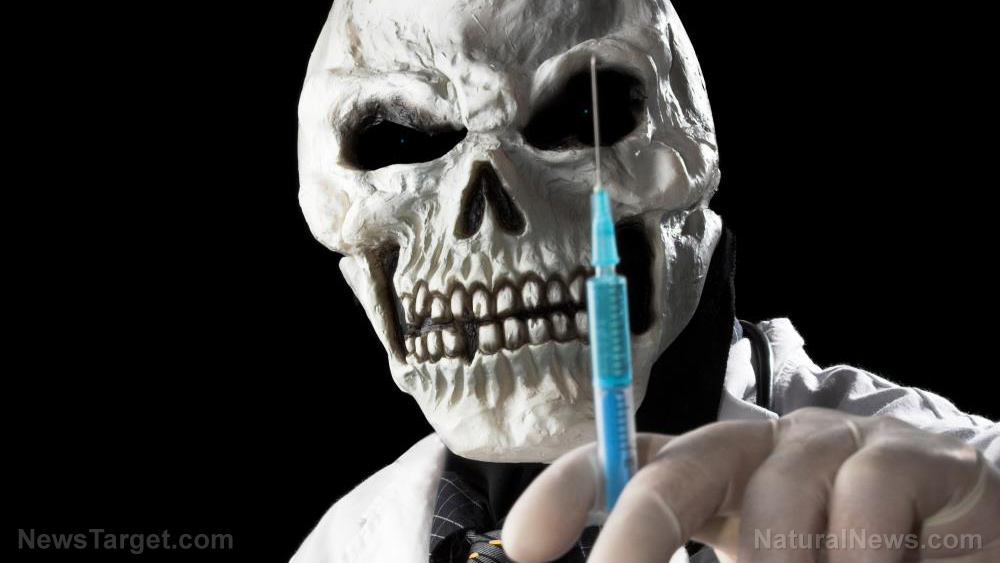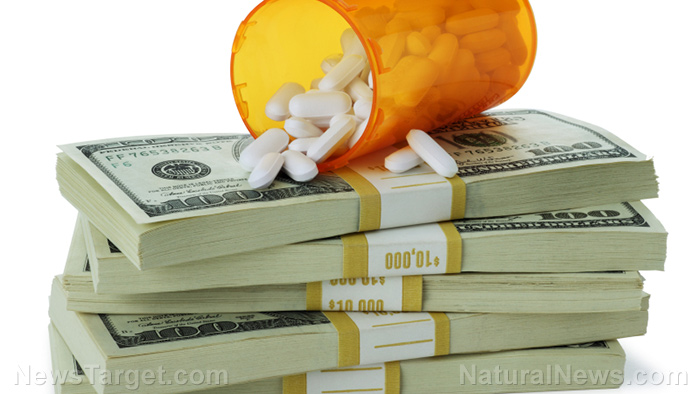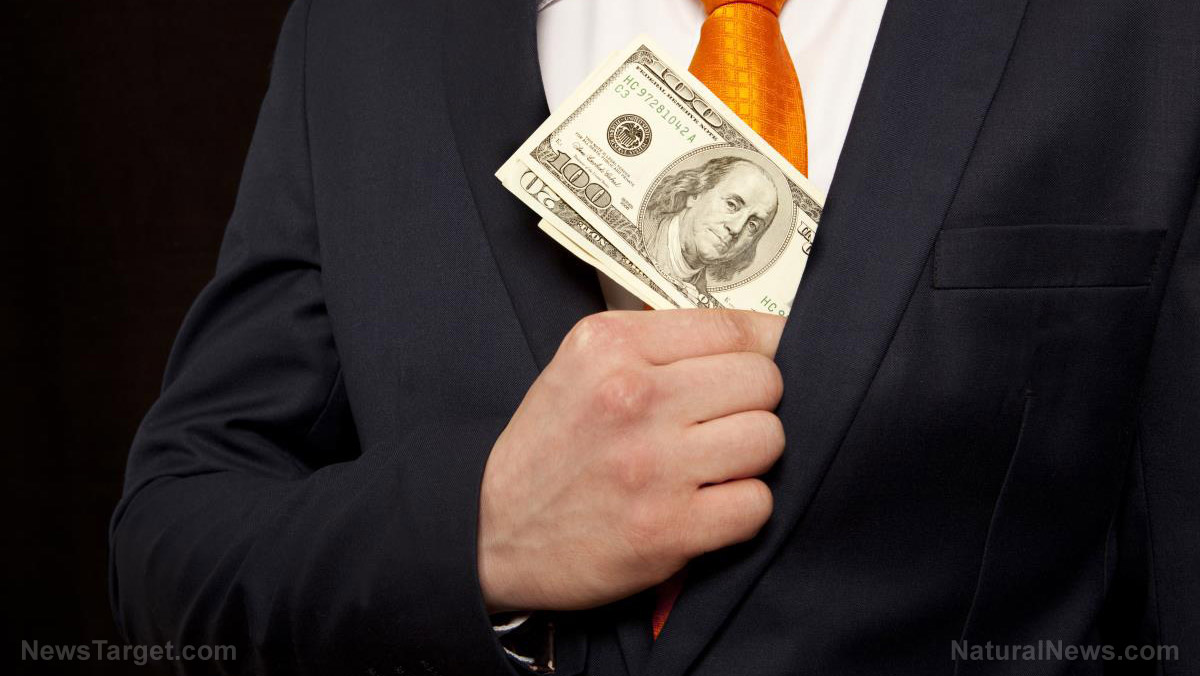Big Pharma helps pay the annual budgets of drug regulators around the world
01/18/2023 / By Arsenio Toledo

Drug regulatory agencies around the world, like the United States’ Food and Drug Administration (FDA), the United Kingdom’s Medicines and Healthcare Products Regulatory Agency (MHRA) and the European Union’s European Medicines Agency (EMA) are largely financed by fees taken from Big Pharma, calling into question their independence from the companies they are supposed to regulate.
Dr. Maryanne Demasi, who investigated the proportion of drug regulator budgets derived from Big Pharma in a study for The BMJ, noted that patients and doctors “expect drug regulators to provide an unbiased, rigorous assessment of investigational medicines before they hit the market.”
“But do they have sufficient independence from the companies they are meant to regulate?” she wrote. (Related: FDA commissioners demand new tools to fight online “misinformation.”)
According to Demasi’s investigation, over the past decades, regulatory agencies like the three major ones previously mentioned have seen larger portions of their annual budgets funded by fees and fines levies from the same industry they are sworn to regulate in an impartial manner.
FDA budget financed by Big Pharma continues to increase
For the FDA, the situation began in 1992. Congress, at the time overwhelmingly controlled by the Democratic Party, passed the Prescription Drug User Fee Act (PDUFA), allowing the Big Pharma industry to fund the FDA directly through “user fees” intended to support the cost of swiftly reviewing drug applications. This act single-handedly moved the FDA from a fully taxpayer-funded entity to one whose annual budget is heavily supplemented by Big Pharma money.
Net PDUFA fees have increased 30-fold since 1993, when the FDA collected around $29 million. In 2016, the agency collected over $884 million.
The collection of fees has become such a regular occurrence for the FDA that top FDA officials get behind closed doors every five years to negotiate how much money they will ask Big Pharma companies for product approvals. Last year, the agency settled on a number – $3 billion, which is nearly half of the FDA’s annual budget. This money helps keep the agency afloat and 6,500 agency employees on the payroll.
These “fees” taken from Big Pharma companies have become so dominant that in 2021, user fees accounted for $1.1 billion, or around three-quarters, of the FDA’s drug division budget.
The MHRA, EMA and other similar agencies around the world are experiencing similar situations, with industry money calling into question the great potential for corruption and collusion between Big Pharma and their respective governments.
In 1995, industry fees accounted for 20 percent of EMA’s budget. By 2010, that had risen to 75 percent. Today, it is nearly 90 percent. In the U.K., 86 percent of the MHRA’s budget is derived from the drug industry.
In Australia, 96 percent of the Therapeutic Goods Administration‘s budget came from the pharmaceutical industry, by far the highest proportion of all drug regulatory agencies investigated by The BMJ in a study.
In Japan, 85 percent of the country’s Pharmaceuticals and Medical Devices Agency’s annual budget comes from the industry. At 50.5 percent, Regulator Health Canada had the lowest proportion of its budget coming from industry fees.
Advocates call for end to user fees program
Advocates for patients and doctors say these kinds of agreements with Big Pharma have enabled the industry to weaken the approval process meant to ensure that drugs are actually safe and effective.
“It’s kind of like a devil’s bargain that I think is not in the best interest of the agency,” said Dr. Joseph Ross, a professor at the Yale School of Medicine and an expert on FDA policies. “It turns this every-five-year cycle into the FDA essentially asking the industry, ‘What can we do to secure this money?'”
Republican Sen. Richard Burr of North Carolina, ranking member of the Senate Committee on Health, Education, Labor and Pensions, noted that the user fees program is anti-small business. Negotiating with the FDA over fees, which he predicted would continue to increase, has limited the ability of smaller pharmaceutical companies to compete with industry giants. Nowadays, new drug application fees cost between $1.5 million to $3.1 million.
“In a perfect world, I hope we would all be here lobbying that there are going to be no user fees paid to the FDA by anybody,” said Burr during a Senate hearing.
“Industry money saturates the globe’s leading regulators,” noted Demasi. “For decades, academics have raised questions about the influence funding has on regulatory decisions.”
Learn more about government collusion with corrupt Big Pharma companies at BigPharmaNews.com.
Watch this clip from InfoWars featuring Dr. Paul Elias Alexander, a former White House medical advisor to former President Donald Trump, discussing how Big Pharma needs to be criminally prosecuted.
This video is from the InfoWars channel on Brighteon.com.
More related stories:
PHARMA FLASHBACK: Pfizer shelled out $2.3B to settle civil and criminal charges in 2009.
Sources include:
Submit a correction >>
Tagged Under:
big government, Big Pharma, Collusion, conspiracy, corruption, deception, drug cartels, European Medicines Agency, FDA, fraud, MHRA, pharmaceutical fraud, real investigations, traitors, truth
This article may contain statements that reflect the opinion of the author
RECENT NEWS & ARTICLES
COPYRIGHT © 2017 EVIL NEWS



















